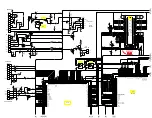
24
IT
EN
5.1 Regolazione dell’estensione
La taratura del freno in estensione (o freno di ritorno) può essere eseguita,
ruotando il registro (R).
Attraverso il registro dell’estensione è possibile controllare la velocità di ritorno
della sospensione in seguito ad una compressione.
Il registro per la regolazione è presente in entrambi gli steli, sui tappi superiori.
La regolazione è possibile ruotando il registro con cacciavite piano.
Una corretta taratura della velocità di estensione permette di ottenere un mezzo
stabile in grado di copiare fedelmente con la ruota gli ostacoli del terreno.
N
OTA
Per modifi care la taratura del freno in estensione partire sempre dalla posizione
di tutto chiuso (registro completamente ruotato in senso orario) ed annotare il
numero di “click” fatto. Ogni posizione del registro è identifi cata da un “click”.
Ruotando il registro (R) in senso orario si aumenta la frenatura idraulica di
ritorno, rendendo in questo modo la forcella più lenta nella fase di ritorno.
Ruotando il registro (R) in senso antiorario si riduce la frenatura idraulica di
ritorno, rendendo in questo modo la sospensione più reattiva nella fase di
ritorno.
A
TTENZIONE
!
Non forzare oltre i fi necorsa il registro.
5.2 Regolazione della compressione
La tara tura del freno in compressione può essere eseguita, ruotando il registro (C).
Il registro per la regolazione è presente in entrambi gli steli, nella parte inferiore
del piedino portaruota.
A
TTENZIONE
!
Se la forcella affonda eccessivamente, regolare immediatamente la
compressione o controllare il livello dell’olio. Una regolazione errata della
compressione può provocare danni alla forcella, incidenti e conseguenti
lesioni gravi o mortali.
Una taratura “dura” della compressione consente una maggiore stabilità e
di conseguenza una guida più aggressiva rendendo il mezzo più reattivo;
viceversa una taratura più “morbida” comporta una minore stabilità a vantaggio
di una guida meno “nervosa”.
N
OTA
Per modifi care la taratura del freno in compressione partire sempre dalla
posizione di tutto chiuso (registro completamente girato in senso orario).
Ruotando il registro (C) in senso orario si aumenta la frenatura idraulica di
compressione, riducendo a parità di sollecitazione la corsa compiuta dalla forcella.
Ruotando il registro (C) in senso antiorario si riduce la frenatura idraulica di compressione,
rendendo la sospensione più cedevole di fronte alle asperità del terreno.
A
TTENZIONE
!
Non forzare oltre i fi necorsa il registro.
•
•
•
•
5.1 Rebound adjustment
Adjust extension (or rebound) braking by turning the adjuster (R).
With the rebound adjuster you can control suspension return speed after
compression.
The regulating adjuster is on the top caps of both legs.
Carry out regulation by turning the adjuster with a fl at-tipped screwdriver
The right rebound speed setting makes the vehiclestable letting it follow the
variations in the terrain and any obstacles.
N
OTE
To modify the rebound braking adjustment, always start from the “fully closed”
position (the screw is fully turned clockwise). Each screw position can be
recognized by a “click”.
Turning the adjuster (R) clockwise increases the rebound hydraulic damping
making the fork slower during the rebound phase.
Turning the adjuster (R) counter-clockwise decreases the rebound hydraulic
damping making the suspension more responsive during the rebound phase.
W
ARNING
!
Do not force the adjuster past its limits.
5.2 Compression adjustment
The compression adjustment can be made by by turning on the adjuster (C).
The regulating adjuster is on the lower part of the wheel axle clamp in both
legs.
W
ARNING
!
If your fork “bottoms” out, immediately adjust the compression adjustment
or check the oil height of the fork. Incorrect compression adjust can result
in fork damage, an accident, personal injury or death.
A “hard” compression setting gives you more stability and lets you ride more
aggressively making the mountain bike more reactive, vice versa a “soft” setting
means less stability but also a less “nervous” ride.
N
OTE
To modify the compression braking adjustment, always start from the “fully
closed” position (the screw is fully turned clockwise).
Turning the adjuster (C) clockwise increases the compression hydraulic
damping and proportionally reduces the travel made by the fork.
Turning the adjuster (C) counter-clockwise decreases the compression
hydraulic damping making the fork softer when hitting a bump.
W
ARNING
!
Do not force the adjuster past its limits.
•
•
•
•
R
R
C
C








































